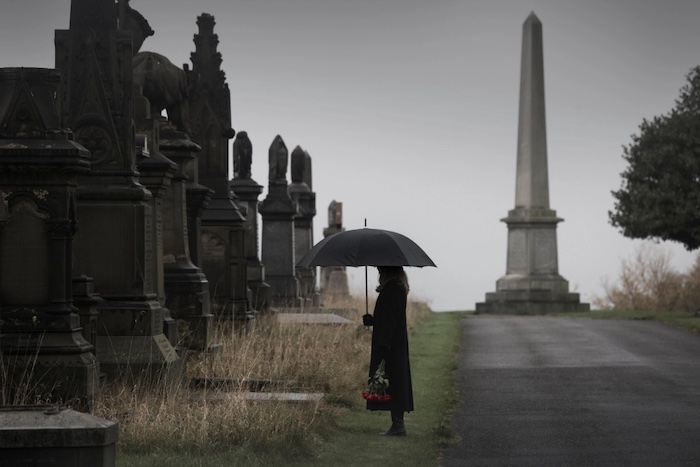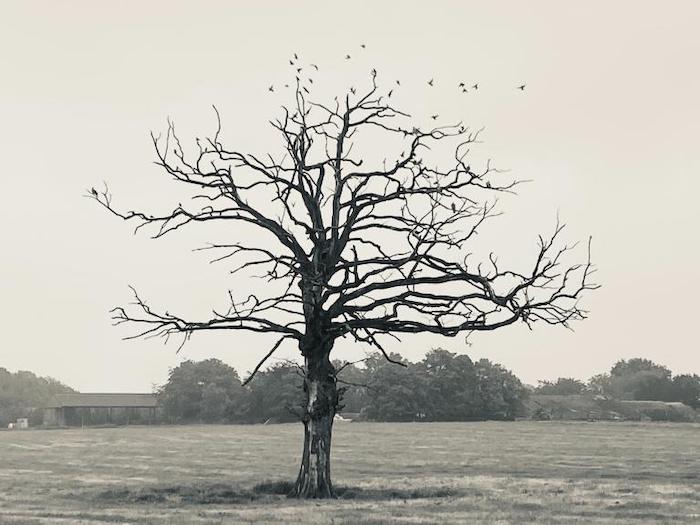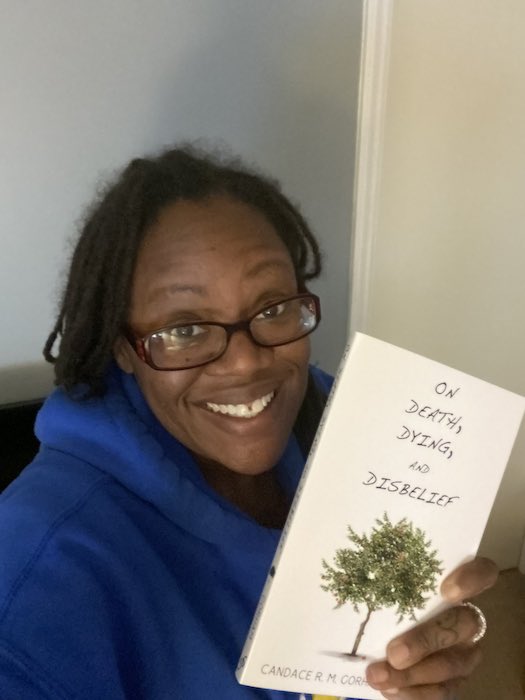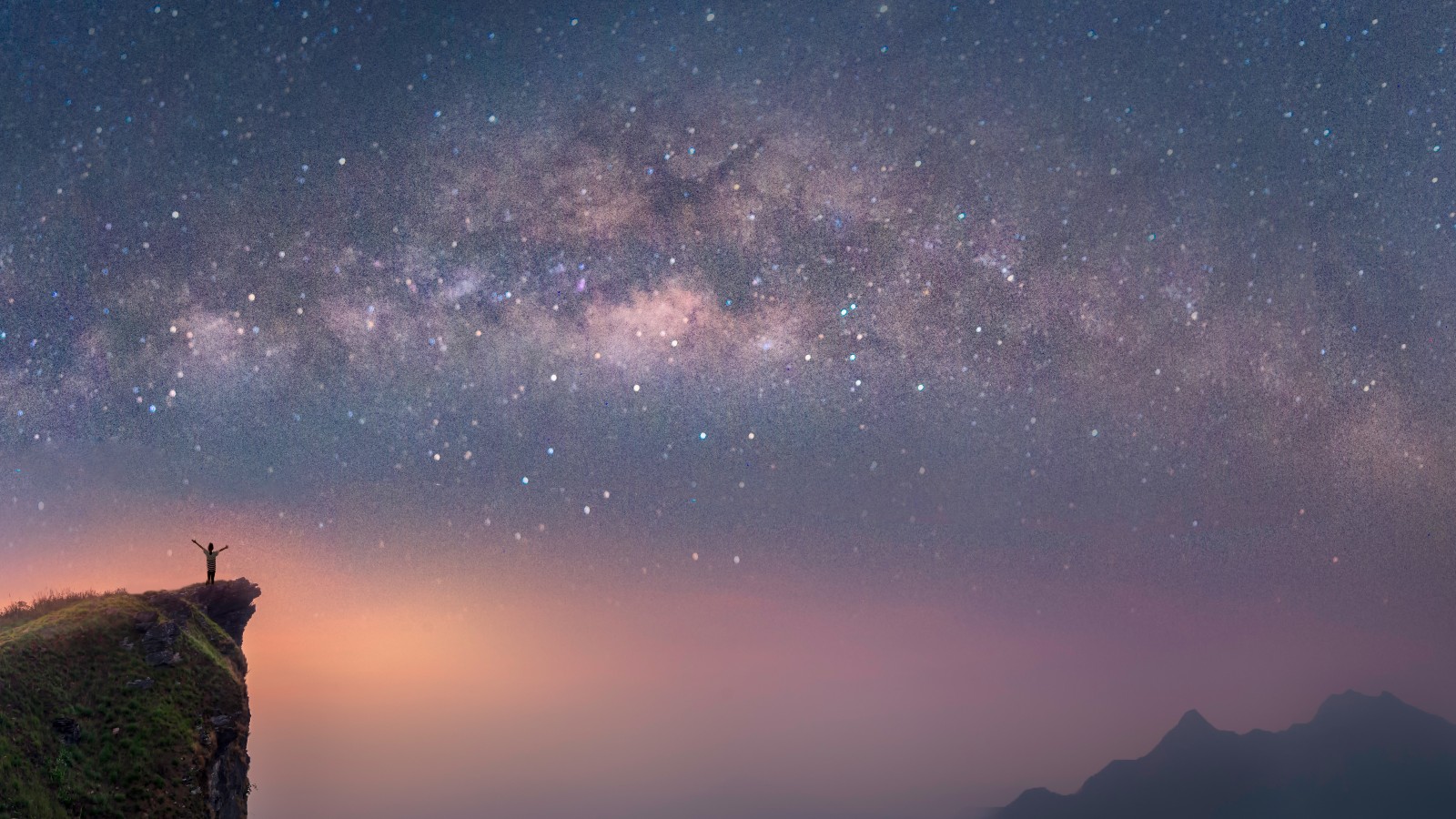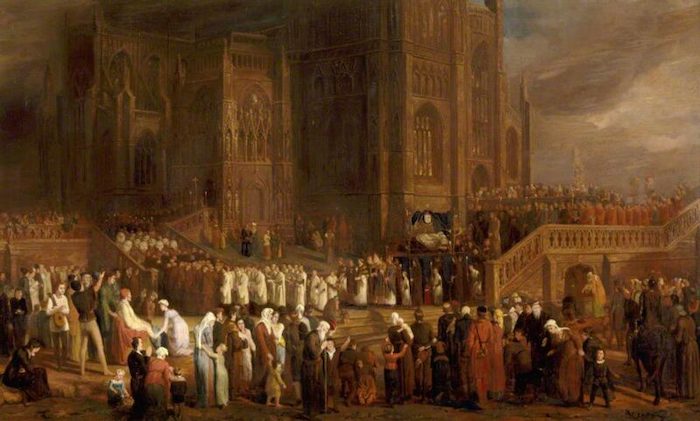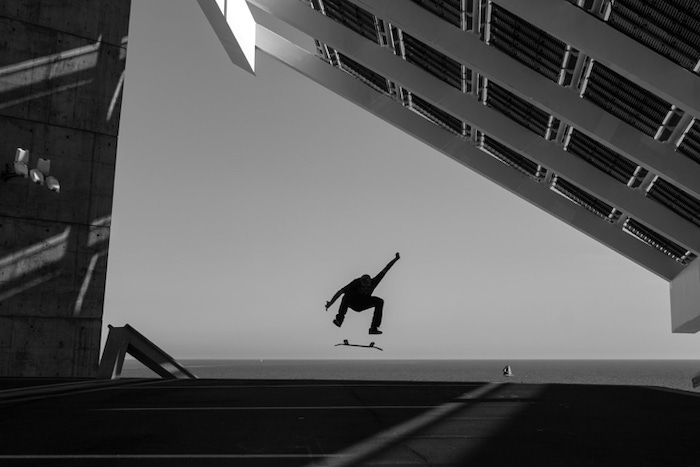
by Michael Brooke
There are literally millions of articles, books, videos, podcasts, and pieces of art dedicated to the ideas surrounding death and dying.
But I’d wager a large fortune that very few of them give a perspective of death and dying through the lens of a skateboarder.
The book “The Endless Wave: Skateboarding, Death & Spirituality” aims to do just that – or at least start a conversation or two.
Firstly, I am by no means an expert in skateboarding, but I enjoy it immensely.
I’ve been joyfully riding since 1975 and pride myself on riding all types of terrain with all types of skateboards.
I enjoy street, vert, transition, longboarding, freestyle, and I’ll even run slalom cones.
My journey writing about skateboarding started in 1995 with this article: dansworld.com/michael.html
Dansworld was one of the first websites on skateboarding, and I was fortunate to be able to write about my experiences.
Full disclosure: I got the date wrong. I started riding in 1975, not 1976, but everything else is pretty much spot on.
The site inspired me to create my own website. I called it The SkateGeezer Homepage.
Its aim was to publicize older skateboarders and get them thinking about the nostalgic side of riding.
Visit the page – interlog.com/~mbrooke/skategeezer.html – if you dare, but I warn you, the graphics are pretty brutal.
Then again, what do you expect? It was created over 25 years ago!
The SkateGeezer Homepage led to a book contract and, in 1999, “The Concrete Wave: The History of Skateboarding” was published.
It sold 42,000 copies and launched a 52-part TV series.
After this, I launched International Longboarder Magazine in the summer of 1999. This magazine eventually became Concrete Wave, and I published and edited it until the summer of 2018.
Here’s a collection of issues: issuu.com/concretewave
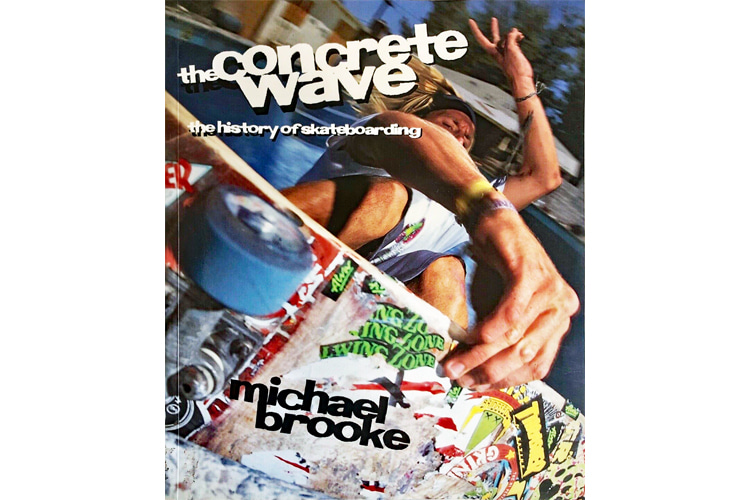
From Publisher to Funeral Director’s Assistant
When I decided to sell the magazine, it was because I felt that it was time to do something else.
Originally, I thought I’d move into working at a non-profit. It turned out that my life was going to go in a different direction.
I wound up answering a job advertisement at a local funeral home. I had done some volunteer work at a nearby hospice and retirement home.
After my interview, they asked me to come in for a day to try things. This was late June 2018, and something about the job felt right.
So, for the last three years or so, I’ve been working as a funeral director’s assistant. It was quite a transition from publishing.
I pretty much do everything but arrange funerals.
From premature babies to those over 100 years old, I’ve experienced death up close and personal.
I’ve done dozens of house calls to transfer the deceased back to our funeral home and assisted at well over 500 funerals.
It’s been over three years since I wrote about skateboarding and over 25 years since I connected with Dansworld to write my first piece.
It feels wonderful to be writing again.
I want to thank my family, my wife Michal, daughter Maya and sons Jonathan and Ethan. They have been incredibly supportive of everything I’ve done.
They’ve also been monumentally patient and understanding too. Without them, I’d be nowhere.
I’d also like to thank Nathan Ho for inspiring me and being a catalyst for me to start writing again.
My hope is that this book inspires my fellow skateboarders to think about death and dying from a different perspective – a perspective that is uniquely ours.
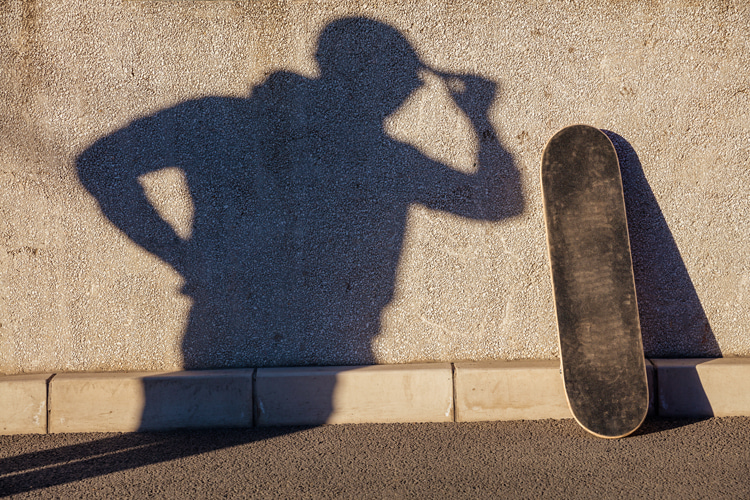
1. Balancing the Risk vs. Reward
Think about the first time you stepped on a board. Were you a little bit scared or anxious?
Chances are you might have had some trepidation, but it was mitigated by the sheer joy and freedom you saw other skaters experiencing, and you wanted some of that!
So, you took a chance, jumped on the board, and were hopefully rewarded.
It is not just a question of balancing on a skateboard, but how you balance the risk vs. the reward.
Skateboarders know that falling can produce painful and sometimes lethal consequences.
But all those worries and fears are cast aside for the reward that is riding. Now think about the first time you learned to drop in on a mini-ramp or bowl.
Again, you probably felt a little anxious but knew instinctively that the reward would be truly worthwhile.
It is the combination of risk vs. reward that forms the first part of a skater’s lens, and we carry this throughout our life.
What I have learned in my 57 years of living and 46 years of riding a skateboard is that sometimes you have to jump right in, despite the difficulty or risk.
Built into the DNA of skateboarding is risk, and I know for a fact that it has changed the way I look at death and dying.
While it can be risky to skateboard, I feel that the greater risk is not living a fulfilling, joyful life.
The countless hours spent with friends skateboarding create a unique bond.
Sure, there are times you are competing in a game of skate or who can go the fastest down a hill, but mostly the ride is the reward.
Think of the road trips you’ve been on with your fellow skaters. That first push can lead to a lifetime of freedom and exploration.
For me, skateboarding was a catalyst to lead me to people, music, art, and ideas that I normally wouldn’t have discovered.
The more you commit, the greater the reward.

The Formula for a Joyful Life
Skateboarders know all about quality time – especially if you’re living in a climate that is not sunny all the time.
We cherish the opportunity to ride with friends. But most importantly, we value the time put into riding a skateboard.
We know that at any moment, a pebble, car, or crack in the pavement could stop us in our tracks.
When I attend a funeral, I can tell almost immediately what kind of eulogies I will hear.
If the family is tight-knit and supportive of one another, the eulogies will often be about the time the person put into people.
While hearing about a person’s business or academic accomplishments can be impressive, it is the anecdotes about the time spent with family and friends that really leave an impression on me.
I have never once heard, “I wish my father would have spent less time with us” or “I wish my mom would have spent more time at the office.”
Ultimately, life is about balance.
If you are obsessed with skateboarding to the point that it leaves you penniless, you’ve gone too far.
Conversely, there are so many millions of people afraid to take that first push or to drop in.
They firmly believe that life is scary and meant to be cautiously navigated. Their fears can lead to frustration, anger, and depression.
It makes for a joyless life.
Skateboarding has a magical way of creating a sense of freedom in your mind. Once your mind is free, anything is possible.
After all, you have a 100 percent chance of dying. The question is: what are you going to do about it?
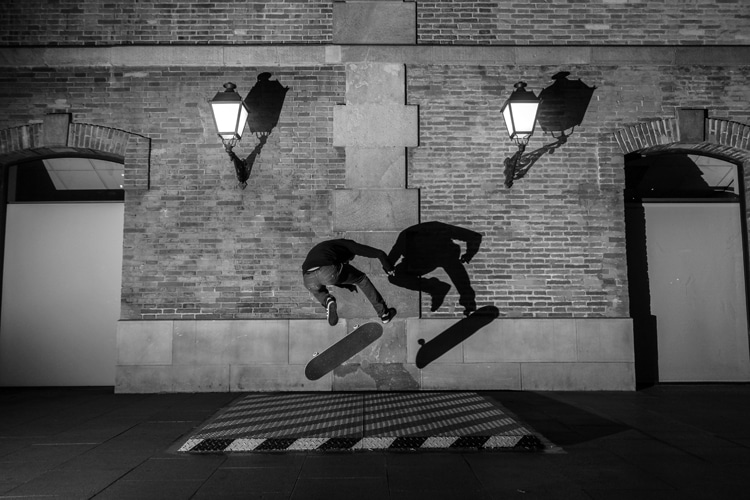
2. Reality Doesn’t Just Bite – It Spits!
Before I start this next chapter, I wanted to preface things with a small warning. The truth is that discussing death and dying can be very difficult for some.
Nathan and I are going to hit on some very challenging and somewhat painful ideas over the course of this book.
But if you picked up on what I was writing about in Chapter One, I think you’ll do just fine.
The following incident happened about three years ago, but I remember it like it was yesterday.
I had been at my job as a funeral director’s assistant for less than a week.
It was a blazing hot day in July, and I was getting to know my fellow co-workers. At the cemetery, we had spied someone lurking about 200 feet away.
We were told that it was an estranged brother who was not invited to the funeral but had somehow found out the time and place and was making his presence known.
It created a little bit of intrigue, but none of us were concerned that he would do something to disrupt the funeral.
As this was literally my second or third time attending a funeral at a gravesite, I wasn’t really sure if having a lurker was a normal occurrence or something completely uncommon.
It turned out to be something else – it turned out to be completely off the rails. The funeral service took about 30 minutes to finish.
The family left the grave, and slowly the brother walked up to the grave.
He stood in front of the grave and spat on it. Then he said, “I’m glad you’re dead, you f*****g c**t.”
He promptly left, and I stood there with my jaw dropped. As he left, I could feel the tension and anger just swirling around him.
I was literally stunned into silence.
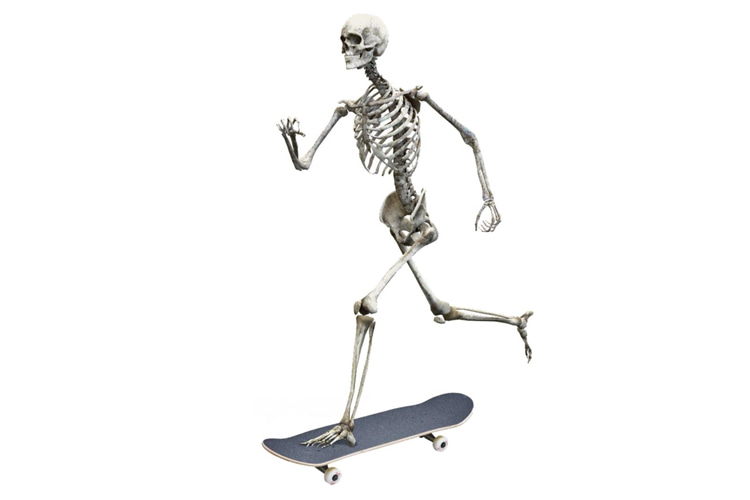
Gaining Appreciation for Life
I am happy to report that a scene like this is not a common occurrence. The amount of visceral hatred that seethed in this man’s veins was both intense and shocking.
While I will never know what led up to this moment, it is forever seared in my brain.
A fellow staff member remarked that he’d been working in funeral services for over 25 years and had never encountered something like this before.
I guess in some crazy way, my timing was pretty good.
There is no doubt in my mind that you gain an incredible appreciation for life when you are surrounded by death.
It seems oddly counter-intuitive, and yet I encounter it constantly. What can we learn from my story about this man?
I think you could spend many years trying to unpack a scene like this, but I think it boils down to just one crucial thing.
“You gotta handle your shit, or shit will handle you.”
Clearly, this man (who appeared to be in his mid-60s) and his mother (along with the rest of the family) needed help.
He clearly carries a burning resentment that was overwhelming. Whatever history is between the family, it would appear that it was never dealt with.
This man needed help. Maybe he got it, but I sense it never really helped sufficiently. Or maybe, in the last three years, he did receive some help.
I can only hope that he did. Sadly, I will never know.
Skaters come from a variety of backgrounds. Some are rich, some are poor, and some are middle class.
I would venture a guess that a number of skaters turned to skateboarding because it was a path to freedom from an issue.
These issues or problems can range from mild to severe.
No matter what a skater tries to leave behind (i.e., an abusive home, inattentive parents, abusive sibling, or some other problem), the fact remains that skateboarding can’t fully erase the problem.
Coming to terms with this can be both alarming and painful, but it is necessary.
Make no mistake – I am glad I had skateboarding when I was younger. It wasn’t just a creative outlet; it provided me with a great deal of support.
But in truth, I never dealt with certain s**t until I reached my 50s.
Of course, things change with time, and nowadays, people are a lot more open to dealing with mental health issues.
But the reality is that if you use skateboarding as your only path to freedom, you aren’t dealing with the problem.
This can have a substantially negative impact as you move through life.
If you carry with you hatred against people who don’t look like you or skate like you, it is you who has the problem.
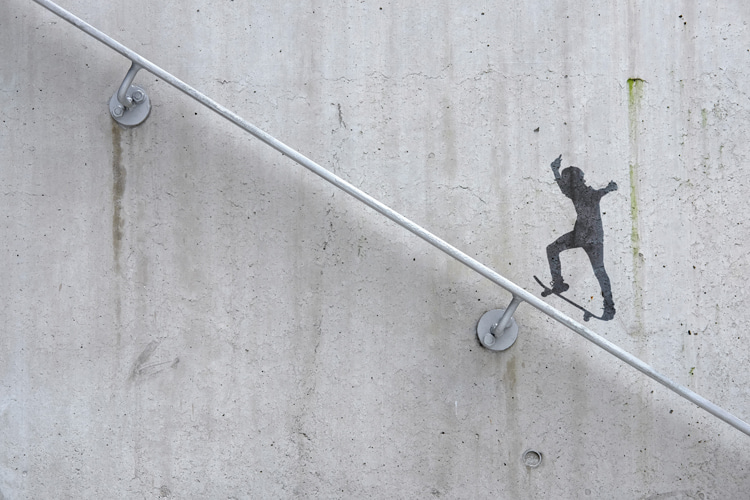
Skateboarding Will Never Love you Back
Skateboarding promotes the idea of freedom, but if you are running away from an issue that needs to be dealt with, you will never be truly free.
This is a hard truth, but it is critical to accept.
As much as we love skateboarding or any other activity, it can’t truly replace family or close friends.
A skateboarder knows instinctively to value each moment riding – whether alone or in a group.
But as you start to move from adolescence to middle age and beyond, you realize that skeletons in closets have a peculiar way of rearing their heads.
Whatever demons you may carry, skateboarding has proven to be a great way to keep them at bay.
But the demons won’t fully be exercised until you face reality.
I have tried yoga, cooking, gardening, and conversing in another language.
At some point or another, these activities have let me down, oftentimes with ridiculous and embarrassing results.
I used to say that skateboarding never let me down. But the fact is that skateboarding is an activity, not a person.
No matter how much you love your skateboard or the act of skateboarding, it will never love you back.
It can’t because a skateboard is an inanimate object. An object that certainly improves your life, but it is only an object.
Skateboarding will be the catalyst for you to have experiences that you will love.
Often, it will bring you people who you might grow to cherish (and respect).
But the fact remains your skateboard will outlive you. A hundred years from now, your descendants might know that you skated.
But one thing is for certain: if you don’t handle your shit eventually, your descendants will have to.
Complete Article ↪HERE↩!
